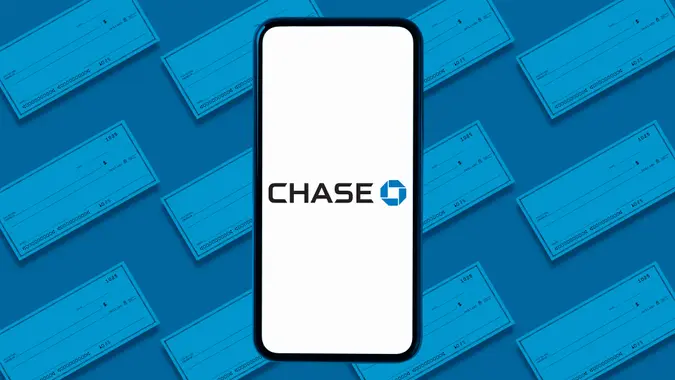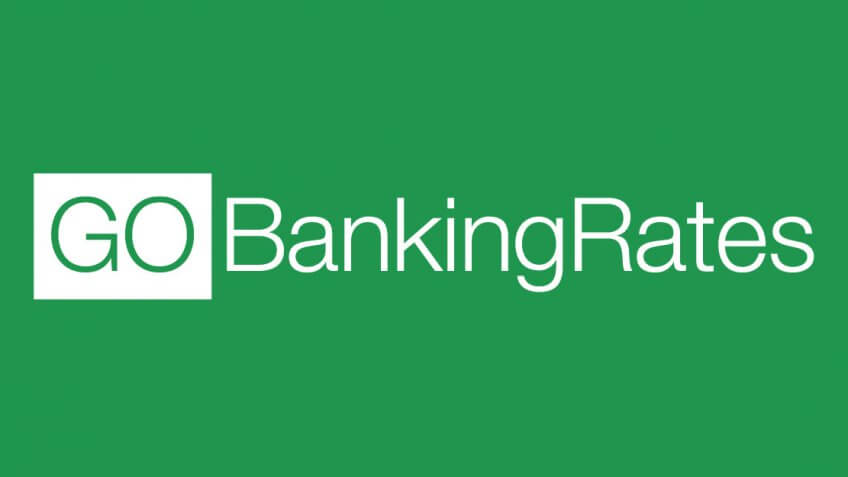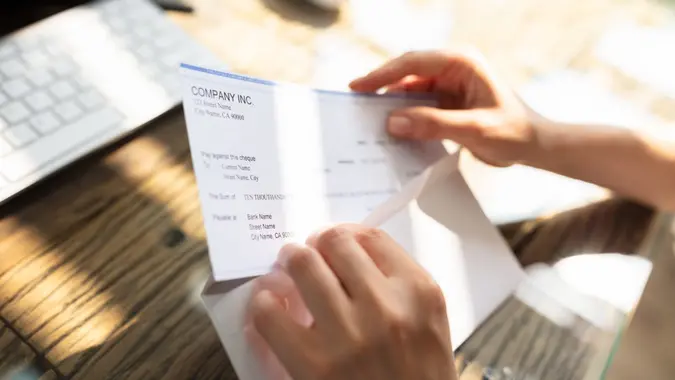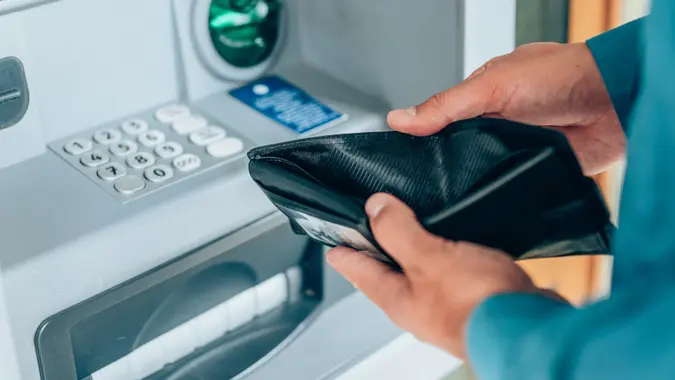How to Write a Check to Yourself: A Step-by-Step Guide

Commitment to Our Readers
GOBankingRates' editorial team is committed to bringing you unbiased reviews and information. We use data-driven methodologies to evaluate financial products and services - our reviews and ratings are not influenced by advertisers. You can read more about our editorial guidelines and our products and services review methodology.

20 Years
Helping You Live Richer

Reviewed
by Experts

Trusted by
Millions of Readers
While the digital age has transformed the way we handle finances, traditional methods like checks still hold their ground. Writing a check to yourself can be helpful when you want to transfer money between your accounts or withdraw cash.
How to Write and Deposit a Check to Yourself
Follow these steps
- On the “pay to” line, simply write your own name.
- Fill in the amount you wish to transfer or withdraw in both the numerical and written-out sections.
- Sign the check as you normally would.
- Deposit or cash the check at your bank or ATM
This is an alternative to electronic transfers and can be useful if you’re facing transfer limits or if you need immediate funds and the electronic process might take a day or two.
Why Would You Want to Write a Check to Yourself?
Here are some examples of when writing a check to yourself is both practical and necessary:
- Transferring money between personal accounts: If you have accounts in different banks, writing a check to yourself can be an efficient way to move money from one institution to another without incurring wire transfer fees.
- Accessing cash from a remote bank: If you’re in a location where your primary bank doesn’t have a branch or ATM nearby, but you have an account in a local bank, you can write a check to yourself from the primary bank and cash it at the local one.
- Setting aside specific funds: If you have a savings account dedicated to a specific purpose like a vacation or emergency fund, you might write a check to move money into that account from your general savings or checking account.
- Business owners paying themselves: Entrepreneurs or small business owners often pay themselves a salary from their business revenues. Writing a check to themselves is one method to do this, especially if they want to keep business and personal finances separate.
- Temporary holding: If you’re closing an account but aren’t yet sure where you want to move the funds, you might write a check to yourself and hold onto it until you make a decision.
- Gifting or loaning money to yourself: In more complex financial scenarios, especially involving business or investments, one might write a check to themselves as a form of loan or to move money between their personal and investment portfolios.
Good To Know
While these situations offer valid reasons to write a check to yourself, always ensure that you’re aware of any potential fees, hold times or other bank-specific policies that might affect the transaction.
Making a Check Out to Cash: What You Need to Know
When writing a check to yourself or to another person, you can write “CASH” in the pay to line. This can be helpful when you’re trying to transfer money to yourself or if you don’t know the name of the person you are sending money.
However, this can be a very insecure way to transfer money and some banks may refuse to accept them or put extra holds on the money.
If you lose the check before depositing it, anyone who finds it can deposit it to the bank. Writing the name of the recipient, even if you are the recipient, means there is an extra layer of security in case the wrong person gets a hold of the check.
Can You Write a Check to Yourself for Mobile Deposit?
Yes, you can write a check to yourself for a mobile deposit. But if you’re transferring money between two accounts at the same bank, it might be faster to use the bank’s online transfer function. This is called writing a bad check
Can a Bank Refuse to Cash a Check Written to Myself?
A bank will refuse to cash a check you wrote to yourself if your bank account doesn’t have enough funds. This is called writing a bad check. If there’s proof that you intentionally wrote a bad check, it is a crime.
Should You Write a Check to Yourself?
Writing a check to yourself is a legitimate and often useful method of handling certain financial transactions.
As with any financial transaction, safety should be paramount. Here are some tips to consider:
- Use a pen: Just as when writing checks to others, always use a pen for security.
- Keep records: Document the transaction in your check register, spreadsheet or financial tracking app. This helps in keeping a clear record of all transactions.
Secure your checks: If you’re not using them, keep your checkbook in a safe place, away from prying eyes.
FAQ
Here are the answers to some of the most frequently asked questions regarding writing checks.- Is it legal to write a check to yourself?
- Yes, as long as you have the money in your account.
- How big of a check can I write to myself?
- As long as you have the money to cover the balance available in your account, you can write the check for as much as you want. Amounts over several thousand dollars might process slower as the bank makes sure there is no fraud. Your bank might have it's own policies around large checks, so make sure you're aware of them before you do it.
- What happens if you write a check to yourself with insufficient funds?
- This is called writing a bad check. In some cases, you'll just have to pay a fee. If there's proof that you intentionally wrote a larger check than your account could cash, you could be charged with a crime.
- Can you write a check to yourself for a balance transfer?
- Yes, but if you're transferring money between two accounts at the same bank, it might be faster to use the bank's internal transfer feature.
Editor's note: This article was produced via automated technology and then fine-tuned and verified for accuracy by a member of GOBankingRates' editorial team.
 Written by
Written by  Edited by
Edited by 























